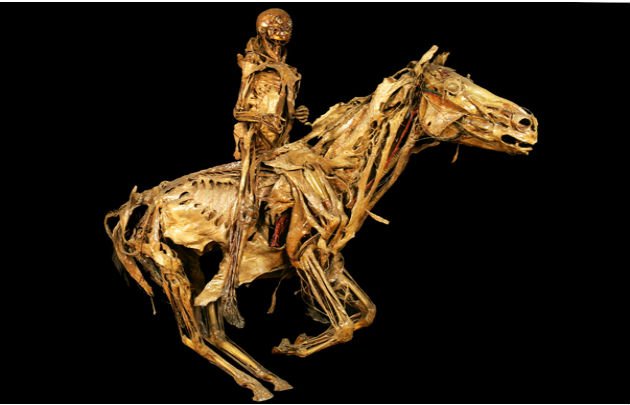 Image 1 of 11
Image 1 of 11

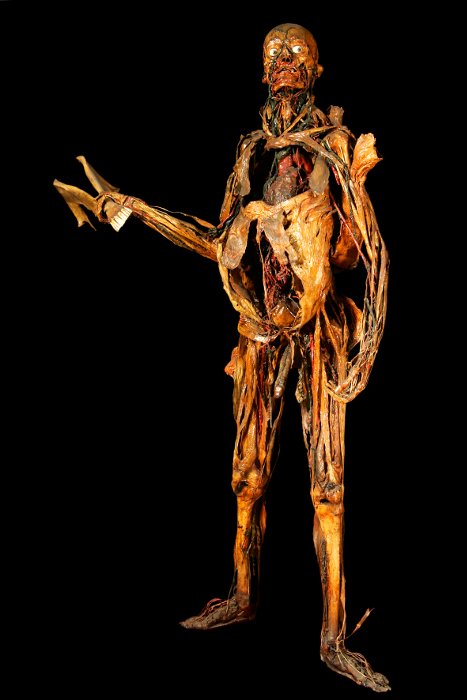 Image 2 of 11
Image 2 of 11

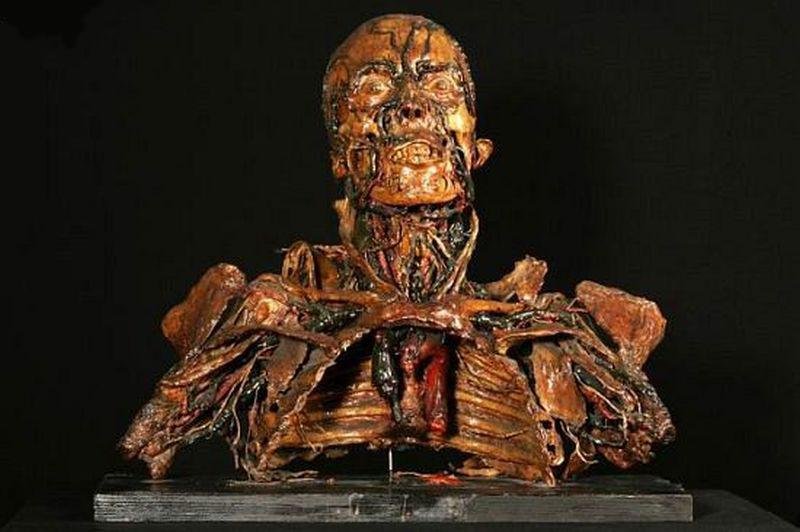 Image 3 of 11
Image 3 of 11

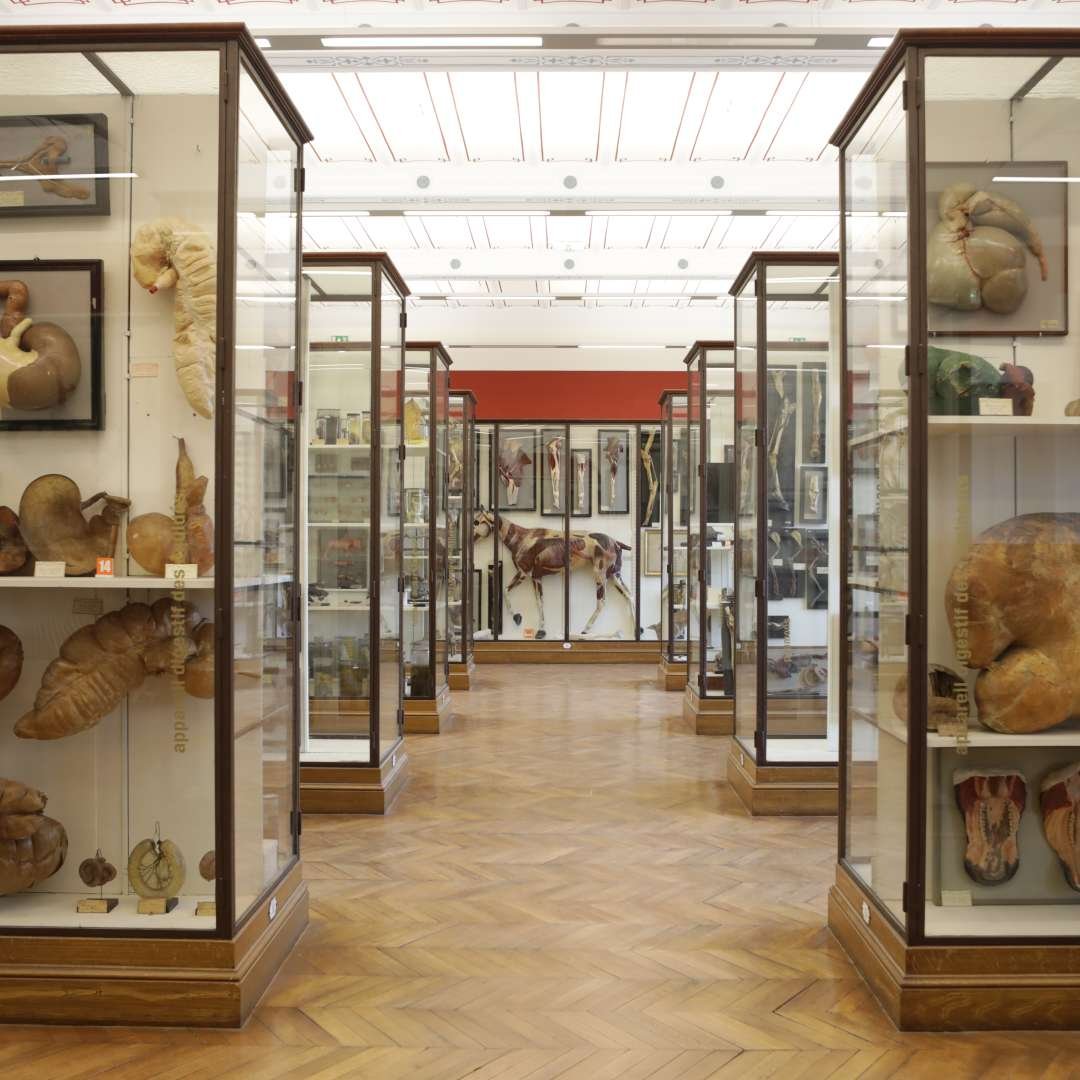 Image 4 of 11
Image 4 of 11

 Image 5 of 11
Image 5 of 11

 Image 6 of 11
Image 6 of 11

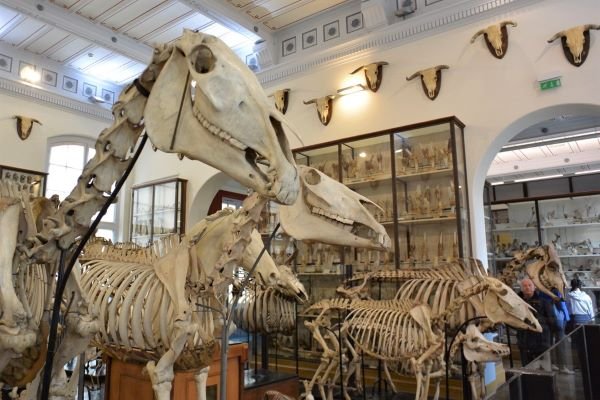 Image 7 of 11
Image 7 of 11

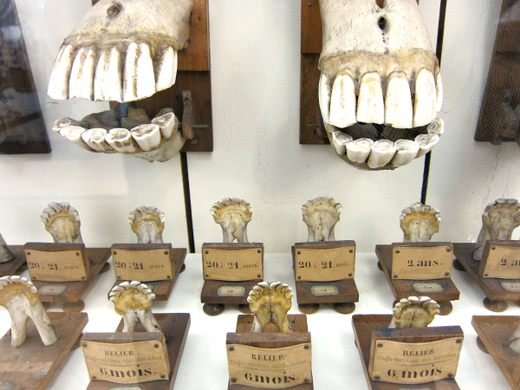 Image 8 of 11
Image 8 of 11

 Image 9 of 11
Image 9 of 11

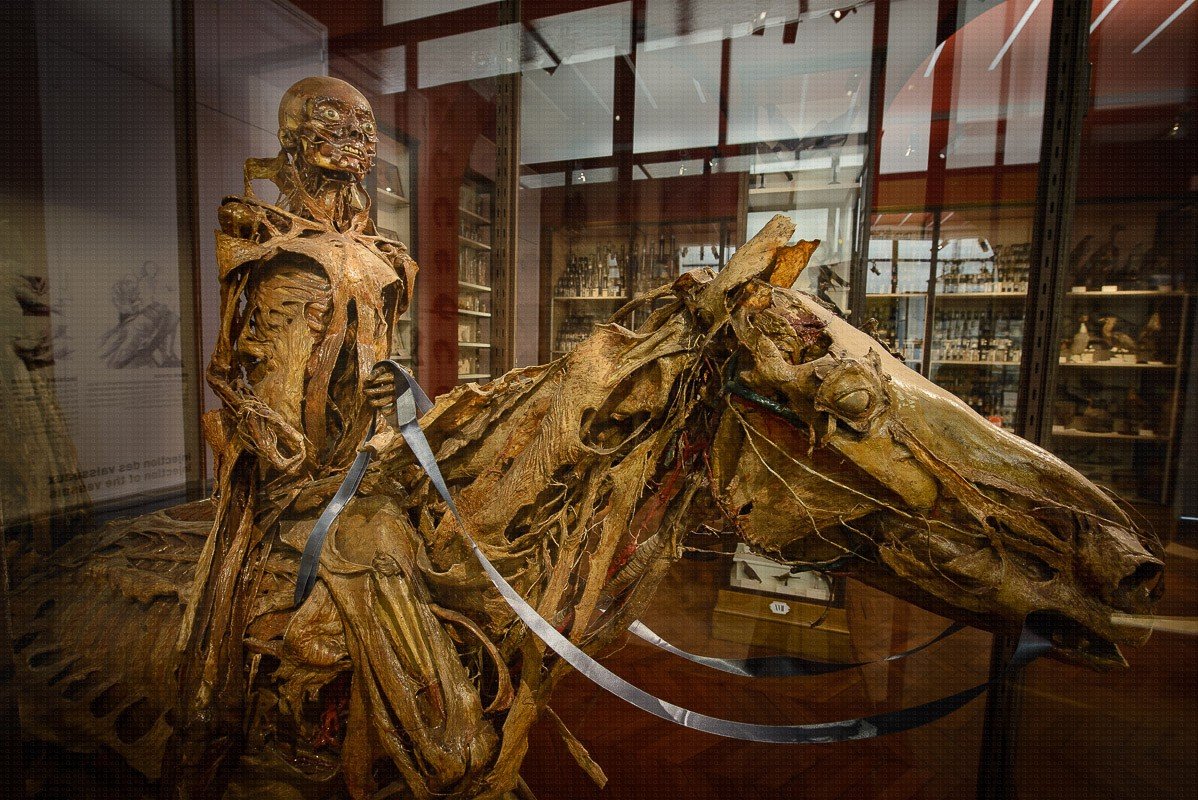 Image 10 of 11
Image 10 of 11

 Image 11 of 11
Image 11 of 11












SOLD OUT Art and Anatomy Day at Paris’ Musée Fragonard
Date: Saturday, October 15
Time: 10 am - 6 pm (Symposium: 10 am - 1 pm, tours 2 pm -6 pm)
Admission: $ 35 (Includes Symposium + Guided Tour)
Conference Only: $25
Extra: Wax Modeling Class by Anatomical Artist Eleanor Crook (More here)
Note: please choose preferred tour time in drop down list at check out; Choices: 2 pm - 3:20 pm or 3:30 pm - 4:50 pm.
Please note: All programs in English
ALL TICKETS MUST BE PURCHASED BY OCTOBER 12, DUE TO SECURITY REQUIREMENTS
Join Morbid Anatomy this Ocobter in Paris, France, for a day-long leap into the intersections of art and anatomy in an unrivaled location: The Musée Fragonard de l'École vétérinaire de Maisons-Alfort.
This museum—one of France’s oldest, opening in 1766—showcases the fascinating 18th century anatomical écorchés created from real human and animal bodies by artist and anatomist Honoré Fragonard, cousin of the well known Rococo painter Jean-Honoré Fragonard. it also houses a vast and astounding collection of anatomical oddities, animal skeleton, and dissections.
Attendees will get to know the collections—and beyond!—via a symposium featuring five illustrated lectures by international curators, scholars, and makers followed by guided tours of the museum.
Full schedule below; hope to see you there!
SCHEDULE
Symposium 10 am - 1 pm
Lunch Break: 1 pm - 2 pm
Guided Tours of the Museum 2 pm - 5 pm
SYMPOSIUM SCHEDULE
10:00 am
Honoré Fragonard and the Musée Fragonard de l'École vétérinaire de Maisons-Alfort
Christophe Degueurce, Dean of the National Veterinary School of Alfort, Curator of the Fragonard Museum
10:30 am
In Death so Full of Life: Fragonard’s Écorchés as Sculpture
Eleanor Crook, Sculptor and Medical Artist
11:00 am
French Wax Production: From its Birth in the 18th Century to its Rise in the 19th Century
Dr. Nathalie Latour, Art Historian and Wax Artist
11:30 am
The Paris Morgue as a Muse: Art and Inspiration Among the Anonymous Dead
Catriona Byers, Historian and Writer
12:00 pm
Meaningful Anatomy from Amsterdam’s Museum Vrolik
Dr. Laurens de Rooy, Curator and Director of Amsterdam’s Museum Vrolik
SYMPOSIUM LECTURE DETAILS AND SPEAKER BIOS
Honoré Fragonard and the Musée Fragonard de l'École vétérinaire de Maisons-Alfort
Christophe Degueurce, Dean of the National Veterinary School of Alfort, Curator of the Fragonard Museum
This talk, by the curator of the Musee Fragonard, will introduce us to the work of eighteenth-century anatomist Honoré Fragonard—famed for his real human and animal écorchés, or flayed figures. These pieces are extraordinary works of virtuosic skill that have survived nearly two and a half centuries in the Fragonard Museum in Alfort, on the outskirts of Paris.
Like the superb anatomical preparations made by the renowned seventeenth- to eighteenth-century anatomist Frederik Ruysch, Fragonard’s specimens challenge our understanding of historical science, Western culture, and the display of the dead. A desiccated rider mounted atop a galloping horse, wondrous demonstrations of animal anatomy: these impressive spectacles of permanently preserved bodies are still on display in the stunning collection of the Fragonard Museum. Intriguing, strange, and the rarest of rare, Fragonard’s écorchés are specimens from a realm that exists between art and science and are the historical precursor of modern-day plastinated anatomical specimens popularly exhibited worldwide.
Christophe Degueurce is a Professor at the National Veterinary School of Alfort, Curator of the Fragonard Museum, and author of Fragonard Museum: The Écorchés.
In Death so Full of Life: Fragonard’s Écorchés as Sculpture
Eleanor Crook, Sculptor and Medical Artist
They live, or rather stand dead, in a scientific museum, but Fragonard's dissected posed people and animals preserve a striking uncanny presence , a haunting peeling materiality and vivid sense of animation, demanding to be judged by artistic criteria. Sculptor and wax modeler Eleanor Crook discusses their visual and spiritual merits , antecedents and influence, and pays tribute to a macabre artist whose skills and daring remain unequalled.
Eleanor Crook is an artist with a special interest in anatomy and mortality. She trained in London in the 1990s at Central St Martins and the Royal Academy Schools and works internationally, exhibiting fine art and specializing in wax modeling and bronze sculpture. She is artist in residence at the Gordon Museum of Pathology London.Her sculptures are in a number of public collections including the Science Museum London, the Hunterian Museum of the Royal College of Surgeons of England, the Gordon Museum, Kings College London, the Royal Pharmaceutical Society, the Vrolik Museum Amsterdam, the Anatomy and Pathology museums of Padua and of Careggi in Florence. She works as a specialist in historical wax anatomical models with the collections of the Gordon, Ghent University and Vrolik Museums and the Anatomical Museum of Cagliari, Sardinia.
Rise in the 19th Century
Dr. Nathalie Latour, Art Historian and Wax Artist
Anatomical waxes arrived in France in 1700, when the Italian artist and abbot Gaetano Giulio Zumbo settled in Paris. Zumbo was renowned for his miniature waxes, including his dioramas known as the “Theatres of death” representing the corruption of bodies and the precariousness of existence through four intricate models named “The plague”, “The triumph of time”, “The burial” and “The syphilis”. He created the first anatomical wax model after traveling to Bologna, the epicenter of anatomical knowledge of the time, and pursued in this field after meeting the French “surgeon" Guillaume Desnoues in Genoa.
From this time on, French medical ceroplasty grew in remarkable breadth. First presented as covetable rarities in cabinets of curiosities, French ceroplasty progressively integrated the medical world and went on to enjoy an international reputation in the 19th century—so much so that French wax anatomical models were seen as the cutting edge of progress through the world.
This talk will explore the history of anatomical waxworks in France, with an eye towards understanding why and how French ceroplasty dominated the international market through the 19th century.
Nathalie Latour, PhD in art history, conservator and artist, is dedicated to revive ceroplasty from the perspective of research and artistic creation. Her publications and conferences aim to restore the importance of anatomical sculptures both in the artistic field and in the context of knowledge’s historical advances. Her artistic work consists in recreating wax mixtures and processes that have now disappeared by adapting them to a contemporary conception of ephemeral bodies. Author of Ceroplasty, immortalised bodies, Sade 2020 art book award, and co-author of Corpus mortui, from flesh to wax.
The Paris Morgue as a Muse: Art and Inspiration Among the Anonymous Dead
Catriona Byers, historian and writer
When we think of morgues today, we imagine discreet, medical spaces; waiting rooms between the worlds of the living and the dead. But the earliest modern morgues of the nineteenth century had multiple functions, ranging from exhibiting unclaimed bodies for identification to advancing anatomical study, forensic science and criminology. The most famous of these was the Paris morgue, originally established in 1804 just moments from Notre-Dame cathedral. It quickly developed an international reputation as the “best free theatre in Paris” for its spectacular public display of the unclaimed dead, a sight which drew huge daily crowds for over a century.
But despite the tabloid tales that helped shape the morgue’s public reputation as a lurid popular attraction, this immersion in salacious true crime wasn’t the only appeal. For many contemporary writers, artists and photographers, the morgue acted as a muse, inspiring a vast array of creative and artistic works.
Ranging from gothic literature and death masks to anatomy paintings and early photography, this talk will delve into the morgue’s complex relationship with the overlapping worlds of art and anatomy, and the ways in which this public display of the dead attracted, repelled and ultimately inspired multiple generations of artists. In doing so, we can begin to explore the myriad of meanings - and ethical dilemmas - that emerge from using the anonymous dead as an aesthetic and creative subject, both historically and into the present day.
Catriona Byers is a writer, photographer and historian specializing in urban death, policing, medicine, forensics and photography from the nineteenth-century to the present day. She’s currently working on a PhD at King’s College London, focusing on the morgues of Paris and New York from 1864-1914, alongside research projects relating to crime scene photography, and American pauper cemeteries. She divides her time between London, Paris and New York, and moonlights as a photographer and food stylist alongside her historical research. For more of Catriona’s work, you can follow her on Instagram and Twitter @heymorguegirl, or visit her website.
Meaningful Anatomy from Amsterdam’s Museum Vrolik
Dr. Laurens de Rooy, Curator and Director of Amsterdam’s Museum Vrolik
The Vrolik Museum, in Amsterdam, originated as a private collection of father Gerard Vrolik (1775–1859) and his son Willem Vrolik (1801–1863). Both of them were professors of anatomy in Amsterdam. True 19th-century collectors, they collected specimens from over a wide field of interests: regular anatomy, comparative anatomy, pathological anatomy, and congenital malformations. At the death of Willem Vrolik the collection comprised about 5000 specimens. For teaching purposes the collection was donated to the Amsterdam ”Illustre school” (that became a university in 1877).
New specimens were added to the collection by subsequent professors of anatomy, of which Louis Bolk (1866–1930) is the most important. He collected about 3,000 specimens, mostly in the fields of evolutionary morphology, physical anthropology and regular anatomy. The last important specimens were added in the 1950s, bringing the total number of objects in their collection to about 10,000. Besides wet specimens and dried, osteological specimens, the museum also has a rich collection of wax embryological models and plaster anatomy torsos and busts.
In this talk, Dr. Laurens de Rooy, historian of science and curator director of Museum Vrolik, the anatomical museum of the University of Amsterdam, will talk bout 25 meaningful ‘objects’ from the 200 years of history of Museum Vrolik that connect the collection to the history of Amsterdam, Europe and the world.
Dr. Laurens de Rooy is historian of science and curator director of Museum Vrolik, the anatomical museum of the University of Amsterdam, which is located in the Academic Medical Center. He received his PhD in 2009. In 2012 De Rooy refurbished/changed permanent exhibition of the museum, with more emphasis of the historical context of the collection. De Rooy also lectures medical history. His current interest is in the history of physical anthropology.
Date: Saturday, October 15
Time: 10 am - 6 pm (Symposium: 10 am - 1 pm, tours 2 pm -6 pm)
Admission: $ 35 (Includes Symposium + Guided Tour)
Conference Only: $25
Extra: Wax Modeling Class by Anatomical Artist Eleanor Crook (More here)
Note: please choose preferred tour time in drop down list at check out; Choices: 2 pm - 3:20 pm or 3:30 pm - 4:50 pm.
Please note: All programs in English
ALL TICKETS MUST BE PURCHASED BY OCTOBER 12, DUE TO SECURITY REQUIREMENTS
Join Morbid Anatomy this Ocobter in Paris, France, for a day-long leap into the intersections of art and anatomy in an unrivaled location: The Musée Fragonard de l'École vétérinaire de Maisons-Alfort.
This museum—one of France’s oldest, opening in 1766—showcases the fascinating 18th century anatomical écorchés created from real human and animal bodies by artist and anatomist Honoré Fragonard, cousin of the well known Rococo painter Jean-Honoré Fragonard. it also houses a vast and astounding collection of anatomical oddities, animal skeleton, and dissections.
Attendees will get to know the collections—and beyond!—via a symposium featuring five illustrated lectures by international curators, scholars, and makers followed by guided tours of the museum.
Full schedule below; hope to see you there!
SCHEDULE
Symposium 10 am - 1 pm
Lunch Break: 1 pm - 2 pm
Guided Tours of the Museum 2 pm - 5 pm
SYMPOSIUM SCHEDULE
10:00 am
Honoré Fragonard and the Musée Fragonard de l'École vétérinaire de Maisons-Alfort
Christophe Degueurce, Dean of the National Veterinary School of Alfort, Curator of the Fragonard Museum
10:30 am
In Death so Full of Life: Fragonard’s Écorchés as Sculpture
Eleanor Crook, Sculptor and Medical Artist
11:00 am
French Wax Production: From its Birth in the 18th Century to its Rise in the 19th Century
Dr. Nathalie Latour, Art Historian and Wax Artist
11:30 am
The Paris Morgue as a Muse: Art and Inspiration Among the Anonymous Dead
Catriona Byers, Historian and Writer
12:00 pm
Meaningful Anatomy from Amsterdam’s Museum Vrolik
Dr. Laurens de Rooy, Curator and Director of Amsterdam’s Museum Vrolik
SYMPOSIUM LECTURE DETAILS AND SPEAKER BIOS
Honoré Fragonard and the Musée Fragonard de l'École vétérinaire de Maisons-Alfort
Christophe Degueurce, Dean of the National Veterinary School of Alfort, Curator of the Fragonard Museum
This talk, by the curator of the Musee Fragonard, will introduce us to the work of eighteenth-century anatomist Honoré Fragonard—famed for his real human and animal écorchés, or flayed figures. These pieces are extraordinary works of virtuosic skill that have survived nearly two and a half centuries in the Fragonard Museum in Alfort, on the outskirts of Paris.
Like the superb anatomical preparations made by the renowned seventeenth- to eighteenth-century anatomist Frederik Ruysch, Fragonard’s specimens challenge our understanding of historical science, Western culture, and the display of the dead. A desiccated rider mounted atop a galloping horse, wondrous demonstrations of animal anatomy: these impressive spectacles of permanently preserved bodies are still on display in the stunning collection of the Fragonard Museum. Intriguing, strange, and the rarest of rare, Fragonard’s écorchés are specimens from a realm that exists between art and science and are the historical precursor of modern-day plastinated anatomical specimens popularly exhibited worldwide.
Christophe Degueurce is a Professor at the National Veterinary School of Alfort, Curator of the Fragonard Museum, and author of Fragonard Museum: The Écorchés.
In Death so Full of Life: Fragonard’s Écorchés as Sculpture
Eleanor Crook, Sculptor and Medical Artist
They live, or rather stand dead, in a scientific museum, but Fragonard's dissected posed people and animals preserve a striking uncanny presence , a haunting peeling materiality and vivid sense of animation, demanding to be judged by artistic criteria. Sculptor and wax modeler Eleanor Crook discusses their visual and spiritual merits , antecedents and influence, and pays tribute to a macabre artist whose skills and daring remain unequalled.
Eleanor Crook is an artist with a special interest in anatomy and mortality. She trained in London in the 1990s at Central St Martins and the Royal Academy Schools and works internationally, exhibiting fine art and specializing in wax modeling and bronze sculpture. She is artist in residence at the Gordon Museum of Pathology London.Her sculptures are in a number of public collections including the Science Museum London, the Hunterian Museum of the Royal College of Surgeons of England, the Gordon Museum, Kings College London, the Royal Pharmaceutical Society, the Vrolik Museum Amsterdam, the Anatomy and Pathology museums of Padua and of Careggi in Florence. She works as a specialist in historical wax anatomical models with the collections of the Gordon, Ghent University and Vrolik Museums and the Anatomical Museum of Cagliari, Sardinia.
Rise in the 19th Century
Dr. Nathalie Latour, Art Historian and Wax Artist
Anatomical waxes arrived in France in 1700, when the Italian artist and abbot Gaetano Giulio Zumbo settled in Paris. Zumbo was renowned for his miniature waxes, including his dioramas known as the “Theatres of death” representing the corruption of bodies and the precariousness of existence through four intricate models named “The plague”, “The triumph of time”, “The burial” and “The syphilis”. He created the first anatomical wax model after traveling to Bologna, the epicenter of anatomical knowledge of the time, and pursued in this field after meeting the French “surgeon" Guillaume Desnoues in Genoa.
From this time on, French medical ceroplasty grew in remarkable breadth. First presented as covetable rarities in cabinets of curiosities, French ceroplasty progressively integrated the medical world and went on to enjoy an international reputation in the 19th century—so much so that French wax anatomical models were seen as the cutting edge of progress through the world.
This talk will explore the history of anatomical waxworks in France, with an eye towards understanding why and how French ceroplasty dominated the international market through the 19th century.
Nathalie Latour, PhD in art history, conservator and artist, is dedicated to revive ceroplasty from the perspective of research and artistic creation. Her publications and conferences aim to restore the importance of anatomical sculptures both in the artistic field and in the context of knowledge’s historical advances. Her artistic work consists in recreating wax mixtures and processes that have now disappeared by adapting them to a contemporary conception of ephemeral bodies. Author of Ceroplasty, immortalised bodies, Sade 2020 art book award, and co-author of Corpus mortui, from flesh to wax.
The Paris Morgue as a Muse: Art and Inspiration Among the Anonymous Dead
Catriona Byers, historian and writer
When we think of morgues today, we imagine discreet, medical spaces; waiting rooms between the worlds of the living and the dead. But the earliest modern morgues of the nineteenth century had multiple functions, ranging from exhibiting unclaimed bodies for identification to advancing anatomical study, forensic science and criminology. The most famous of these was the Paris morgue, originally established in 1804 just moments from Notre-Dame cathedral. It quickly developed an international reputation as the “best free theatre in Paris” for its spectacular public display of the unclaimed dead, a sight which drew huge daily crowds for over a century.
But despite the tabloid tales that helped shape the morgue’s public reputation as a lurid popular attraction, this immersion in salacious true crime wasn’t the only appeal. For many contemporary writers, artists and photographers, the morgue acted as a muse, inspiring a vast array of creative and artistic works.
Ranging from gothic literature and death masks to anatomy paintings and early photography, this talk will delve into the morgue’s complex relationship with the overlapping worlds of art and anatomy, and the ways in which this public display of the dead attracted, repelled and ultimately inspired multiple generations of artists. In doing so, we can begin to explore the myriad of meanings - and ethical dilemmas - that emerge from using the anonymous dead as an aesthetic and creative subject, both historically and into the present day.
Catriona Byers is a writer, photographer and historian specializing in urban death, policing, medicine, forensics and photography from the nineteenth-century to the present day. She’s currently working on a PhD at King’s College London, focusing on the morgues of Paris and New York from 1864-1914, alongside research projects relating to crime scene photography, and American pauper cemeteries. She divides her time between London, Paris and New York, and moonlights as a photographer and food stylist alongside her historical research. For more of Catriona’s work, you can follow her on Instagram and Twitter @heymorguegirl, or visit her website.
Meaningful Anatomy from Amsterdam’s Museum Vrolik
Dr. Laurens de Rooy, Curator and Director of Amsterdam’s Museum Vrolik
The Vrolik Museum, in Amsterdam, originated as a private collection of father Gerard Vrolik (1775–1859) and his son Willem Vrolik (1801–1863). Both of them were professors of anatomy in Amsterdam. True 19th-century collectors, they collected specimens from over a wide field of interests: regular anatomy, comparative anatomy, pathological anatomy, and congenital malformations. At the death of Willem Vrolik the collection comprised about 5000 specimens. For teaching purposes the collection was donated to the Amsterdam ”Illustre school” (that became a university in 1877).
New specimens were added to the collection by subsequent professors of anatomy, of which Louis Bolk (1866–1930) is the most important. He collected about 3,000 specimens, mostly in the fields of evolutionary morphology, physical anthropology and regular anatomy. The last important specimens were added in the 1950s, bringing the total number of objects in their collection to about 10,000. Besides wet specimens and dried, osteological specimens, the museum also has a rich collection of wax embryological models and plaster anatomy torsos and busts.
In this talk, Dr. Laurens de Rooy, historian of science and curator director of Museum Vrolik, the anatomical museum of the University of Amsterdam, will talk bout 25 meaningful ‘objects’ from the 200 years of history of Museum Vrolik that connect the collection to the history of Amsterdam, Europe and the world.
Dr. Laurens de Rooy is historian of science and curator director of Museum Vrolik, the anatomical museum of the University of Amsterdam, which is located in the Academic Medical Center. He received his PhD in 2009. In 2012 De Rooy refurbished/changed permanent exhibition of the museum, with more emphasis of the historical context of the collection. De Rooy also lectures medical history. His current interest is in the history of physical anthropology.
Date: Saturday, October 15
Time: 10 am - 6 pm (Symposium: 10 am - 1 pm, tours 2 pm -6 pm)
Admission: $ 35 (Includes Symposium + Guided Tour)
Conference Only: $25
Extra: Wax Modeling Class by Anatomical Artist Eleanor Crook (More here)
Note: please choose preferred tour time in drop down list at check out; Choices: 2 pm - 3:20 pm or 3:30 pm - 4:50 pm.
Please note: All programs in English
ALL TICKETS MUST BE PURCHASED BY OCTOBER 12, DUE TO SECURITY REQUIREMENTS
Join Morbid Anatomy this Ocobter in Paris, France, for a day-long leap into the intersections of art and anatomy in an unrivaled location: The Musée Fragonard de l'École vétérinaire de Maisons-Alfort.
This museum—one of France’s oldest, opening in 1766—showcases the fascinating 18th century anatomical écorchés created from real human and animal bodies by artist and anatomist Honoré Fragonard, cousin of the well known Rococo painter Jean-Honoré Fragonard. it also houses a vast and astounding collection of anatomical oddities, animal skeleton, and dissections.
Attendees will get to know the collections—and beyond!—via a symposium featuring five illustrated lectures by international curators, scholars, and makers followed by guided tours of the museum.
Full schedule below; hope to see you there!
SCHEDULE
Symposium 10 am - 1 pm
Lunch Break: 1 pm - 2 pm
Guided Tours of the Museum 2 pm - 5 pm
SYMPOSIUM SCHEDULE
10:00 am
Honoré Fragonard and the Musée Fragonard de l'École vétérinaire de Maisons-Alfort
Christophe Degueurce, Dean of the National Veterinary School of Alfort, Curator of the Fragonard Museum
10:30 am
In Death so Full of Life: Fragonard’s Écorchés as Sculpture
Eleanor Crook, Sculptor and Medical Artist
11:00 am
French Wax Production: From its Birth in the 18th Century to its Rise in the 19th Century
Dr. Nathalie Latour, Art Historian and Wax Artist
11:30 am
The Paris Morgue as a Muse: Art and Inspiration Among the Anonymous Dead
Catriona Byers, Historian and Writer
12:00 pm
Meaningful Anatomy from Amsterdam’s Museum Vrolik
Dr. Laurens de Rooy, Curator and Director of Amsterdam’s Museum Vrolik
SYMPOSIUM LECTURE DETAILS AND SPEAKER BIOS
Honoré Fragonard and the Musée Fragonard de l'École vétérinaire de Maisons-Alfort
Christophe Degueurce, Dean of the National Veterinary School of Alfort, Curator of the Fragonard Museum
This talk, by the curator of the Musee Fragonard, will introduce us to the work of eighteenth-century anatomist Honoré Fragonard—famed for his real human and animal écorchés, or flayed figures. These pieces are extraordinary works of virtuosic skill that have survived nearly two and a half centuries in the Fragonard Museum in Alfort, on the outskirts of Paris.
Like the superb anatomical preparations made by the renowned seventeenth- to eighteenth-century anatomist Frederik Ruysch, Fragonard’s specimens challenge our understanding of historical science, Western culture, and the display of the dead. A desiccated rider mounted atop a galloping horse, wondrous demonstrations of animal anatomy: these impressive spectacles of permanently preserved bodies are still on display in the stunning collection of the Fragonard Museum. Intriguing, strange, and the rarest of rare, Fragonard’s écorchés are specimens from a realm that exists between art and science and are the historical precursor of modern-day plastinated anatomical specimens popularly exhibited worldwide.
Christophe Degueurce is a Professor at the National Veterinary School of Alfort, Curator of the Fragonard Museum, and author of Fragonard Museum: The Écorchés.
In Death so Full of Life: Fragonard’s Écorchés as Sculpture
Eleanor Crook, Sculptor and Medical Artist
They live, or rather stand dead, in a scientific museum, but Fragonard's dissected posed people and animals preserve a striking uncanny presence , a haunting peeling materiality and vivid sense of animation, demanding to be judged by artistic criteria. Sculptor and wax modeler Eleanor Crook discusses their visual and spiritual merits , antecedents and influence, and pays tribute to a macabre artist whose skills and daring remain unequalled.
Eleanor Crook is an artist with a special interest in anatomy and mortality. She trained in London in the 1990s at Central St Martins and the Royal Academy Schools and works internationally, exhibiting fine art and specializing in wax modeling and bronze sculpture. She is artist in residence at the Gordon Museum of Pathology London.Her sculptures are in a number of public collections including the Science Museum London, the Hunterian Museum of the Royal College of Surgeons of England, the Gordon Museum, Kings College London, the Royal Pharmaceutical Society, the Vrolik Museum Amsterdam, the Anatomy and Pathology museums of Padua and of Careggi in Florence. She works as a specialist in historical wax anatomical models with the collections of the Gordon, Ghent University and Vrolik Museums and the Anatomical Museum of Cagliari, Sardinia.
Rise in the 19th Century
Dr. Nathalie Latour, Art Historian and Wax Artist
Anatomical waxes arrived in France in 1700, when the Italian artist and abbot Gaetano Giulio Zumbo settled in Paris. Zumbo was renowned for his miniature waxes, including his dioramas known as the “Theatres of death” representing the corruption of bodies and the precariousness of existence through four intricate models named “The plague”, “The triumph of time”, “The burial” and “The syphilis”. He created the first anatomical wax model after traveling to Bologna, the epicenter of anatomical knowledge of the time, and pursued in this field after meeting the French “surgeon" Guillaume Desnoues in Genoa.
From this time on, French medical ceroplasty grew in remarkable breadth. First presented as covetable rarities in cabinets of curiosities, French ceroplasty progressively integrated the medical world and went on to enjoy an international reputation in the 19th century—so much so that French wax anatomical models were seen as the cutting edge of progress through the world.
This talk will explore the history of anatomical waxworks in France, with an eye towards understanding why and how French ceroplasty dominated the international market through the 19th century.
Nathalie Latour, PhD in art history, conservator and artist, is dedicated to revive ceroplasty from the perspective of research and artistic creation. Her publications and conferences aim to restore the importance of anatomical sculptures both in the artistic field and in the context of knowledge’s historical advances. Her artistic work consists in recreating wax mixtures and processes that have now disappeared by adapting them to a contemporary conception of ephemeral bodies. Author of Ceroplasty, immortalised bodies, Sade 2020 art book award, and co-author of Corpus mortui, from flesh to wax.
The Paris Morgue as a Muse: Art and Inspiration Among the Anonymous Dead
Catriona Byers, historian and writer
When we think of morgues today, we imagine discreet, medical spaces; waiting rooms between the worlds of the living and the dead. But the earliest modern morgues of the nineteenth century had multiple functions, ranging from exhibiting unclaimed bodies for identification to advancing anatomical study, forensic science and criminology. The most famous of these was the Paris morgue, originally established in 1804 just moments from Notre-Dame cathedral. It quickly developed an international reputation as the “best free theatre in Paris” for its spectacular public display of the unclaimed dead, a sight which drew huge daily crowds for over a century.
But despite the tabloid tales that helped shape the morgue’s public reputation as a lurid popular attraction, this immersion in salacious true crime wasn’t the only appeal. For many contemporary writers, artists and photographers, the morgue acted as a muse, inspiring a vast array of creative and artistic works.
Ranging from gothic literature and death masks to anatomy paintings and early photography, this talk will delve into the morgue’s complex relationship with the overlapping worlds of art and anatomy, and the ways in which this public display of the dead attracted, repelled and ultimately inspired multiple generations of artists. In doing so, we can begin to explore the myriad of meanings - and ethical dilemmas - that emerge from using the anonymous dead as an aesthetic and creative subject, both historically and into the present day.
Catriona Byers is a writer, photographer and historian specializing in urban death, policing, medicine, forensics and photography from the nineteenth-century to the present day. She’s currently working on a PhD at King’s College London, focusing on the morgues of Paris and New York from 1864-1914, alongside research projects relating to crime scene photography, and American pauper cemeteries. She divides her time between London, Paris and New York, and moonlights as a photographer and food stylist alongside her historical research. For more of Catriona’s work, you can follow her on Instagram and Twitter @heymorguegirl, or visit her website.
Meaningful Anatomy from Amsterdam’s Museum Vrolik
Dr. Laurens de Rooy, Curator and Director of Amsterdam’s Museum Vrolik
The Vrolik Museum, in Amsterdam, originated as a private collection of father Gerard Vrolik (1775–1859) and his son Willem Vrolik (1801–1863). Both of them were professors of anatomy in Amsterdam. True 19th-century collectors, they collected specimens from over a wide field of interests: regular anatomy, comparative anatomy, pathological anatomy, and congenital malformations. At the death of Willem Vrolik the collection comprised about 5000 specimens. For teaching purposes the collection was donated to the Amsterdam ”Illustre school” (that became a university in 1877).
New specimens were added to the collection by subsequent professors of anatomy, of which Louis Bolk (1866–1930) is the most important. He collected about 3,000 specimens, mostly in the fields of evolutionary morphology, physical anthropology and regular anatomy. The last important specimens were added in the 1950s, bringing the total number of objects in their collection to about 10,000. Besides wet specimens and dried, osteological specimens, the museum also has a rich collection of wax embryological models and plaster anatomy torsos and busts.
In this talk, Dr. Laurens de Rooy, historian of science and curator director of Museum Vrolik, the anatomical museum of the University of Amsterdam, will talk bout 25 meaningful ‘objects’ from the 200 years of history of Museum Vrolik that connect the collection to the history of Amsterdam, Europe and the world.
Dr. Laurens de Rooy is historian of science and curator director of Museum Vrolik, the anatomical museum of the University of Amsterdam, which is located in the Academic Medical Center. He received his PhD in 2009. In 2012 De Rooy refurbished/changed permanent exhibition of the museum, with more emphasis of the historical context of the collection. De Rooy also lectures medical history. His current interest is in the history of physical anthropology.
